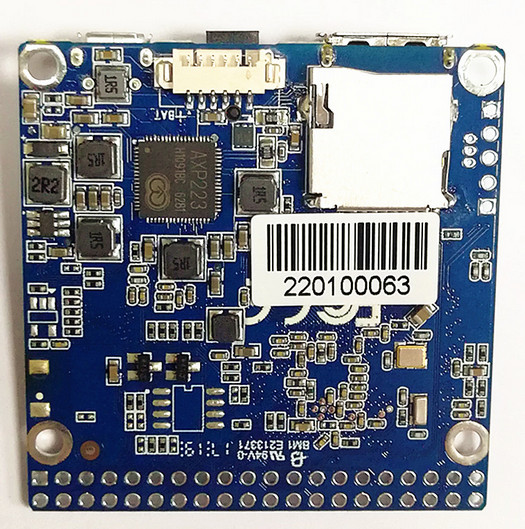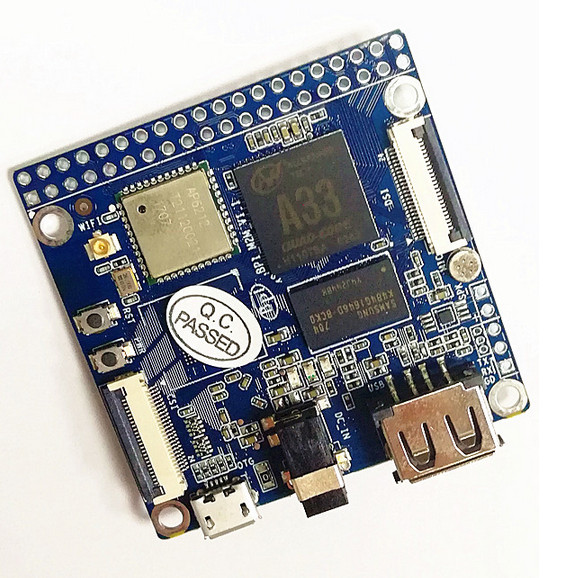Banana Pi M2 Magic development board was first unveiled in February of this year with an Allwinner R16 SoC, 512 MB RAM, and 8GB eMMC flash, and its main selling points were support for MIPI DSI LCD displays, CSI cameras, and 3.7V LiPo batteries. AFAIK SinoVoIP never sold that version of the board, at least on Aliexpress.
Possibly due to the intricacies of Allwinner business units, the company has now officially launched Banana Pi M2 Magic (aka BPI M2M), but replaced Allwinner R16 by the similar Allwinner A33 processor, and removed the 8GB eMMC flash to bring the price down to $23 plus shipping. The “old” Allwinner R16 based Banana Pi M2 Magic board will apparently be sold as M2 Magic Plus soon.
Banana Pi BPI-M2 Magic (A33) specifications:
- SoC – Allwinner A33 quad core ARM Cortex-A7 processor with ARM Mali 400 MP2 GPU
- System Memory – 512MB DDR3
- Storage – micro SD slot
- Display Interface – 4-lane MIPI DSI connector
- Camera Interface – CSI connector supporting up to 5MP sensor, 1080p30 H.265 video capture (OV5640 module)
- Video Decoder – Multi-format FHD video decoding, including Mpeg1/2, Mpeg4, H.263, H.264, etc H.264 high profile 1080p@60fps
- Audio – On-board microphone
- Connectivity – Wifi 802.11 b/g/n, Bluetooth 4.0 LE (AP6212) with u.FL antenna connector
- USB – 1x USB 2.0 host, 1x micro USB 2.0 OTG port
- Expansion – 40-pin header with GPIOs, UART, I2C, SPI, PWM…
- Misc – Reset & power buttons, LEDs,
- Power Supply
- 5V/2A via DC power barrel
- 3.7V Lithium battery support via 6-pin header
- AXP223 PMIC
- Dimensions – 51 x 51 mm
- Weight – 40 grams
 The Wiki indicates the board support Android and Linux, and provides some further information about the interface. Bear in mind SinoVoIP is often not quite fully correct, so make sure to double check if one of the feature is important to you.
The Wiki indicates the board support Android and Linux, and provides some further information about the interface. Bear in mind SinoVoIP is often not quite fully correct, so make sure to double check if one of the feature is important to you.
[Update: October 30, 2017. M2 Magic with 8GB flash, Allwinner R16 sold for $28 + shipping]

Jean-Luc started CNX Software in 2010 as a part-time endeavor, before quitting his job as a software engineering manager, and starting to write daily news, and reviews full time later in 2011.
Support CNX Software! Donate via cryptocurrencies, become a Patron on Patreon, or purchase goods on Amazon or Aliexpress





